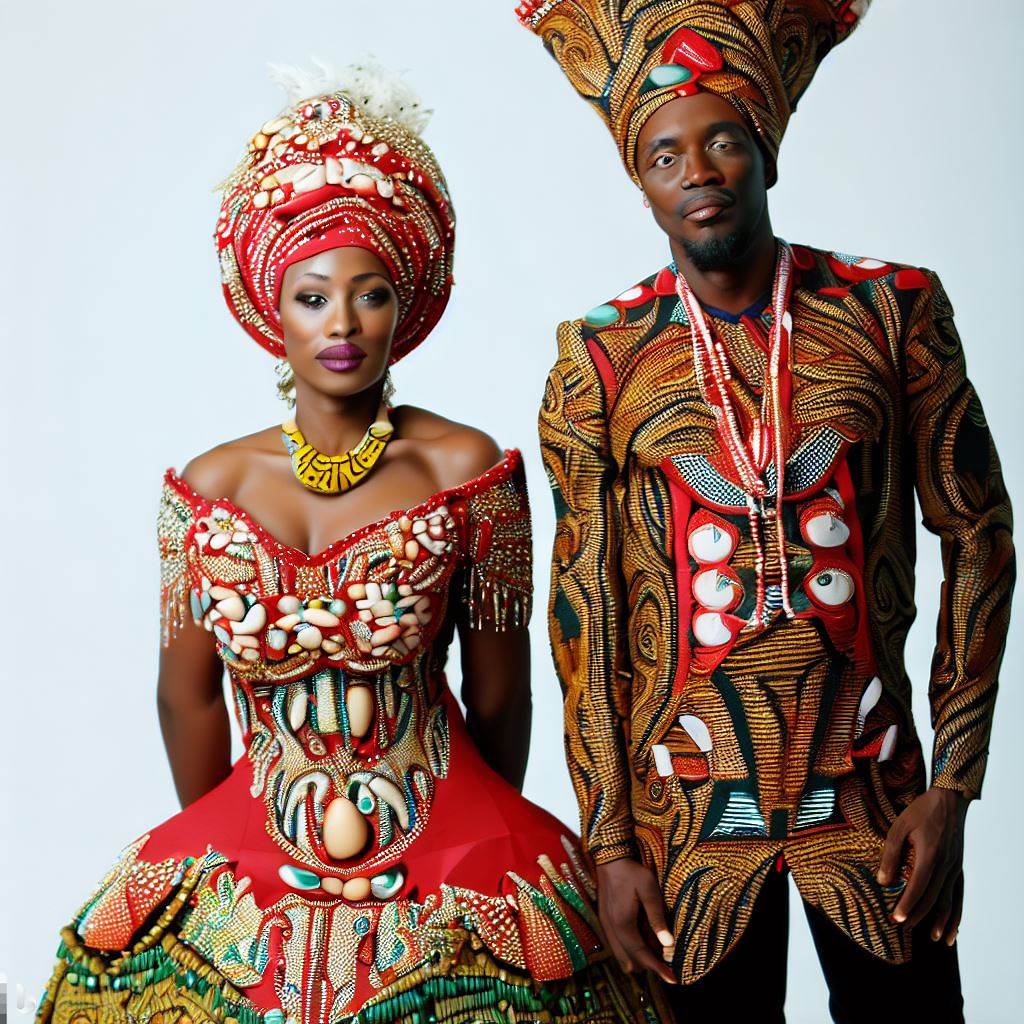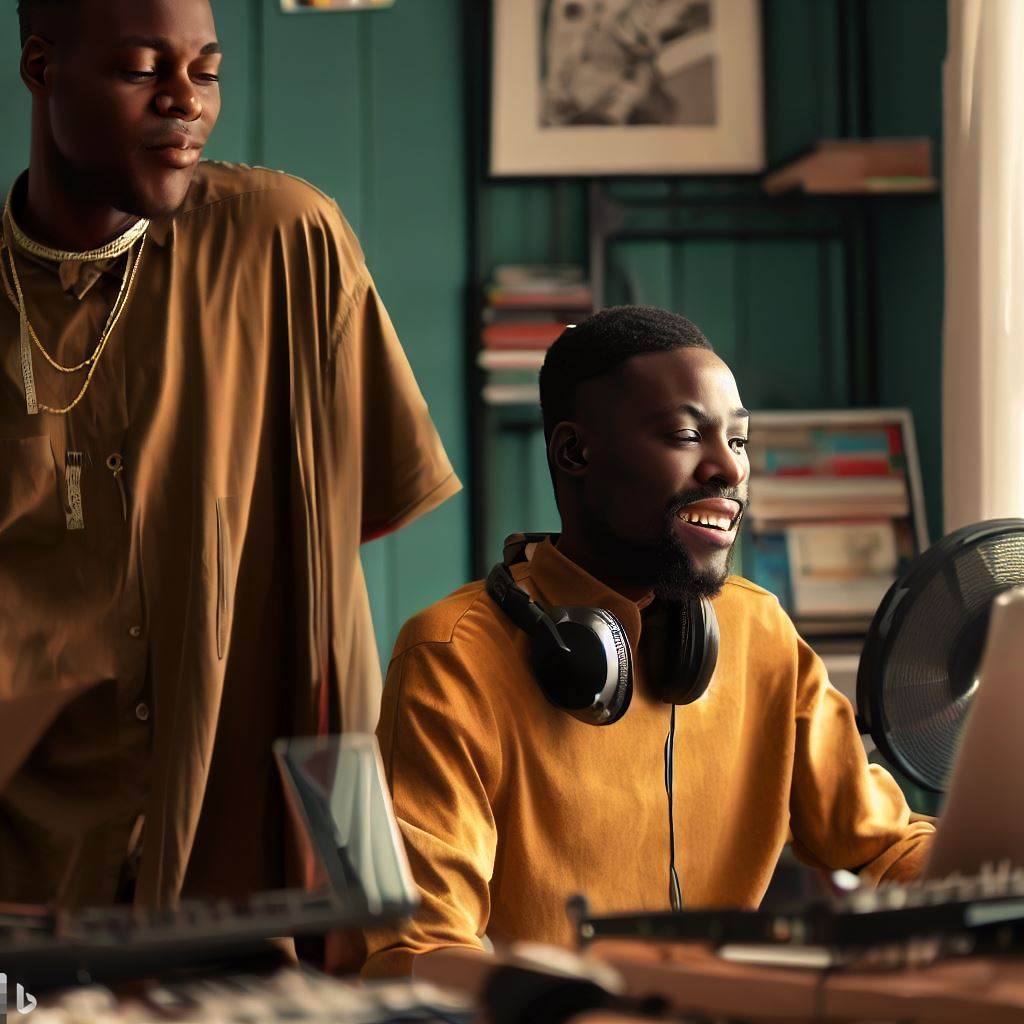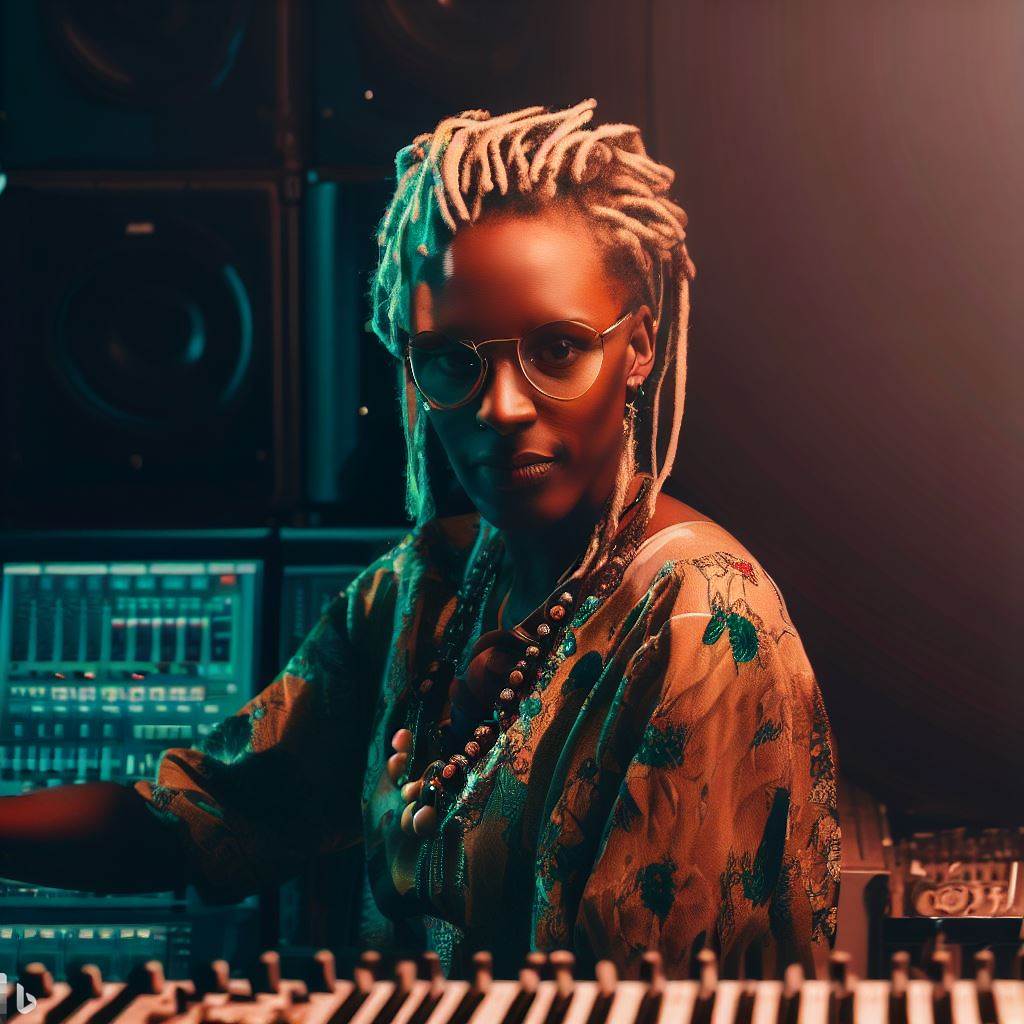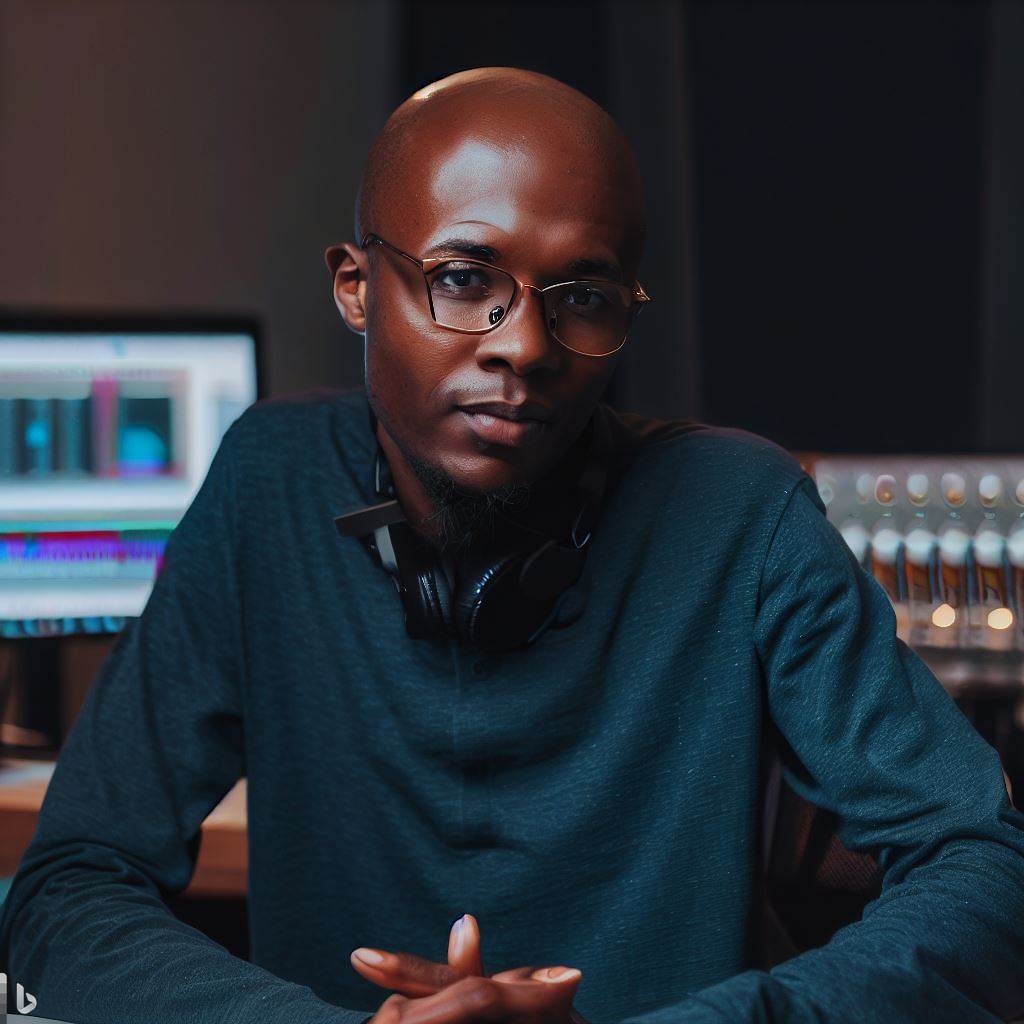Introduction
Topic of the blog post: the behind-the-scenes life of a Nigerian costume designer
Welcome to a sneak peek into the behind-the-scenes life of a Nigerian costume designer.
Significance of costume designing in Nigerian culture and the film industry
In Nigerian culture, costume designing holds immense significance, especially in the vibrant film industry.
- Nigerian costume designers are the unsung heroes behind the captivating looks seen on screens.
- They play a pivotal role in bringing characters to life and setting the scene for storytelling.
- These designers meticulously craft each costume, paying attention to every intricate detail to ensure authenticity and cultural representation.
- They are adept at capturing the essence of the characters they dress, reflecting their personalities and the era they belong to.
- In Nigeria, the film industry, often referred to as Nollywood, is the second-largest in the world. Costume designing here is not just about fashion but about preserving and promoting Nigerian cultural heritage.
- These designers draw inspiration from traditional Nigerian garments, patterns, and textiles, infusing them with a contemporary touch.
- They collaborate closely with directors, actors, and production teams to bring their vision to reality and create visually compelling narratives.
- Beyond the film industry, Nigerian costume designers also contribute to cultural events, stage performances, and festivals.
- Their work extends to dance troupes, music videos, and even creating outfits for influential individuals.
- The role of costume designers in Nigerian culture cannot be overstated.
- They provide a visual portrayal of traditions, history, and societal norms, preserving and celebrating the rich diversity of Nigeria’s heritage.
Join us as we dive deeper into the world of Nigerian costume designing, exploring the creative process, challenges faced, and the immense impact they have on the Nigerian film industry and culture as a whole.
The Role of a Nigerian Costume Designer
Costume designers in Nigeria have a vital role in the entertainment industry as they are responsible for creating and designing the costumes for films, theater productions, and cultural events.
Responsibilities and duties of a costume designer in Nigeria
- Conceptualizing and creating unique costume designs that align with the characters’ personalities and the production’s theme.
- Thoroughly researching the time period, culture, or setting depicted in the production to ensure accuracy and authenticity.
- Collaborating with directors, producers, and other members of the creative team to understand their vision and incorporate it into the costume designs.
- Working closely with actors and performers to ensure the costumes fit properly and reflect the character’s identity.
- Providing guidance and advice on costume changes and styling throughout rehearsals and performances.
- Managing costume budgets and sourcing materials, fabrics, and accessories within the given financial constraints.
- Supervising the construction and alteration of costumes, either by working with a team of seamstresses or by personally sewing and fitting the garments.
- Creating sketches, illustrations, or digital renderings of costume designs to present to the production team for approval.
- Attending fittings, rehearsals, and production meetings to address any costume-related issues and make necessary adjustments.
- Staying updated with the latest fashion trends, historical costume techniques, and cultural practices to enhance their design skills and expand their creative repertoire.
Importance of costumes in Nigerian films, theater, and cultural events
- Cultural representation: Costumes serve as a visual representation of Nigeria’s diverse cultures, showcasing the unique traditions, rituals, and values.
- Character development: Well-designed costumes can help actors physically step into the character’s shoes and embody their personality and traits.
- Enhancing the story: Costumes can effectively transport the audience to a specific time period or setting, adding depth and authenticity to the narrative.
- Visual aesthetics: Eye-catching and intricate costumes captivate the audience, making the production visually appealing and memorable.
- Promoting Nigerian fashion: Costumes in films and theater often feature traditional Nigerian textiles, helping to promote and preserve the country’s rich fashion heritage.
- Patriotic pride: Nigerian audiences take pride in seeing their culture, traditions, and historical events accurately represented through costumes in artistic productions.
In general, costume designers in Nigeria have a crucial role in the entertainment industry. Their responsibilities encompass every aspect of costume design, from concept development to final execution.
Through their work, they contribute to the cultural representation, character development, and aesthetic appeal of Nigerian films, theater productions, and cultural events.
Read: Budgeting for Sound Editing in Nigerian Film Industry
The Creative Process
Steps involved in the costume design process
In the world of costume design, the creative process starts with a spark of inspiration.
Research phase and the inspiration behind Nigerian costume designs
- The costume designer begins by researching the time period, culture, and themes of the production.
- They immerse themselves in Nigerian history, traditions, and fashion to create authentic designs.
- Based on the discussions, the designer starts sketching initial ideas for each costume.
- They explore different silhouettes, fabrics, and colors to bring the characters to life.
- Once the sketches are approved, the designer moves on to the next step: sourcing materials.
- They visit fabric markets, search for vintage pieces, or even create custom textiles.
- The designer carefully selects materials that align with the vision and budget of the production.
- Back in the studio, the designer creates patterns and begins the construction process.
- They meticulously cut, sew, and stitch fabrics to transform the sketches into tangible costumes.
- During this phase, they pay close attention to the fit, functionality, and durability of each piece.
Collaboration between costume designers, directors, and actors
- Next, they collaborate with the director and discuss the vision for each character’s costumes.
- The designer takes into consideration the character’s personality, background, and role in the story.
- While working on the costumes, the designer communicates regularly with the actors.
- They discuss any specific needs or preferences the actors may have regarding their costumes.
- The designer also collaborates with the hair and makeup team to ensure a cohesive look.
- Once the costumes are complete, the designer presents them to the director for approval.
- The director provides feedback, and the designer makes any necessary adjustments or alterations.
- After the final approval, the costumes are ready for the wardrobe fittings with the actors.
- The designer ensures that each costume fits properly and enhances the character’s portrayal.
- Throughout the production, the designer remains on set to address any costume-related issues.
- They assist with quick changes, repairs, or modifications as needed.
- The designer’s attention to detail and dedication contribute to the overall success of the production.
- Their work helps create a visually captivating and immersive experience for the audience.
To summarize, the costume design process is a meticulous and collaborative journey.
From research and sketching to construction and fittings, each step plays a vital role. The designer’s understanding of Nigerian culture and their ability to bring characters to life is essential.
Through their creativity and expertise, these designers contribute to the magic of storytelling on screen.
Read: Key Skills Required For a Successful Translator in Nigeria
A Typical Day in a Nigerian Costume Designer’s Life
A typical morning routine and preparations for the day’s work
As the sun rises, a Nigerian costume designer begins their day, eager to bring their creative vision to life.
With a cup of strong Nigerian coffee in hand, they embark on their morning routine, preparing for the day’s work.
First, they gather inspiration by browsing through fashion magazines, researching cultural traditions, and studying historical references.
Challenges faced by costume designers in Nigeria
The challenges of being a costume designer in Nigeria soon become apparent. Limited resources and budget constraints make their job even more demanding.
With determination, they turn adversity into an opportunity for creativity, using unconventional materials and reimagining existing garments.
As the day progresses, the designer meets with clients, discussing their vision, understanding the characters, and unraveling the story’s essence.
Measurements are taken meticulously, ensuring that every garment fits perfectly and captures the essence of the character.
The time and effort required to design and create costumes
The process of designing and creating a costume requires immense time and effort.
- It starts with sketches, allowing the designer to visualize their creation.
- Next comes the selection of fabrics, colors, and accessories that will bring the design to life in a unique and authentic way.
- The designer’s expertise shines as they hand-sew intricate details, carefully embellishing each piece to reflect the character’s personality.
- Throughout the day, multiple fittings take place, allowing the designer to make adjustments and ensure that the costume is flawless.
- Collaborating with tailors and seamstresses, the designer oversees the production, ensuring that the costumes are executed to perfection.
- Creativity knows no bounds, and the designer often works late into the night, adding final touches and making any last-minute adjustments.
- Finally, the day comes to an end, and the designer takes a moment to reflect on their work, proud of the masterpiece they’ve created.
Although the challenges may be substantial, the satisfaction of seeing their costumes come to life on stage or screen is immeasurable.
A Nigerian costume designer’s life may be filled with long hours and hard work, but their passion and dedication shine through in every creation.
They are the unsung heroes behind the scenes, weaving dreams and telling stories through their artistry and craftsmanship.
So, the next time you watch a Nigerian film or attend a cultural performance, remember the talent and skill that went into creating those costumes.
A day in a Nigerian costume designer’s life is not just about fashion; it’s about preserving traditions, portraying characters, and capturing the essence of a story.
Read: Impact of Digital Revolution on Sound Editing in Nigeria

Drawing Inspiration from Nigerian Culture and Heritage
The rich Nigerian cultural heritage and its influence on costume designs
Nigeria, a country known for its diverse cultural heritage, serves as a captivating muse for costume designers.
With over 250 ethnic groups, each with its unique customs, traditions, and clothing styles, the Nigerian cultural heritage offers a vast pool of inspiration for these creative individuals.
These costume designers skillfully blend traditional and contemporary elements to craft visually stunning and culturally representative costumes that bring stories to life on stage and screen.
Traditional Nigerian clothing styles and designs
Traditional Nigerian clothing styles form the backbone of the costume designer’s work.
From the flamboyant and colorful attire of the Yoruba people to the intricately woven fabrics of the Igbo tribe, these traditional outfits showcase the richness and diversity of Nigerian fashion.
Adire, a hand-dyed fabric with unique patterns, from the southwestern region, and Aso Oke, a cloth woven from local materials, are just a few examples of the traditional clothing styles that inspire costume designers in Nigeria.
Each ethnic group in Nigeria has unique cultural symbols, motifs, and colors associated with it.
- Costume designers draw upon these symbols and incorporate them into their designs to convey specific meanings and messages.
- For example, the use of vibrant colors such as red and gold may represent royalty, while intricate patterns may symbolize spirituality or fertility.
- By carefully selecting these elements, costume designers add depth and authenticity to their creations, capturing the essence of Nigerian culture.
- Furthermore, Nigerian costume designers also play a significant role in preserving and promoting traditional crafts and techniques.
- Many of these designers collaborate with local artisans and craftsmen to create costumes using traditional methods.
- This collaboration not only ensures the authenticity and quality of the costumes but also supports local communities and helps sustain traditional craftsmanship.
How costume designers blend traditional and contemporary elements
However, costume designers don’t merely replicate traditional attire; they infuse their designs with contemporary elements to appeal to modern audiences.
- By incorporating current fashion trends, these designers create costumes that not only honor tradition but also resonate with the present.
- This blend of traditional and contemporary elements ensures that the costumes remain relevant and relatable to today’s audience, bridging the gap between the past and the present.
- The influence of Nigerian cultural heritage goes beyond clothing styles and extends to the overall aesthetic and symbolism of the costumes.
In summary, the rich Nigerian cultural heritage serves as an abundant source of inspiration for costume designers.
By showcasing traditional Nigerian clothing styles and incorporating contemporary elements, these designers not only honor the past but also bring it into the present.
Their creations are a testament to the diversity and beauty of Nigerian culture, capturing the essence of the nation’s heritage through visually stunning costumes.
Through their work, costume designers not only entertain audiences but also play a vital role in preserving and promoting Nigerian traditions and crafts.
Read: The Role of Nigerian Culture in Costume Design
Behind the Scenes: Collaborating with Actors and Production Team
Effective communication and collaboration with actors and the production crew are vital aspects of a Nigerian costume designer’s life.
This close-knit collaboration ensures that the costumes complement the characters, enhance the script, and bring the story to life on the screen.
Importance of Effective Communication and Collaboration
Communication is the backbone of any successful project, and costume design is no exception.
- By actively engaging with actors and the production team, costume designers can translate the director’s vision into tangible costumes that accurately portray the characters.
This process involves constant dialogue to understand the expectations, preferences, and limitations of both the actors and the production team. - Through effective communication, costume designers gather insights into the character’s personality, background, and motivations.
They collaborate with actors to ensure that the costumes reflect the character’s journey, emotions, and story arc. - By establishing a strong rapport with the actors, costume designers can create costumes that empower and enable the actors to fully embody their characters.
- Furthermore, collaboration with the production crew is essential to ensure that the costumes align with the overall production design and aesthetics.
- By working closely with the set designers, cinematographers, and makeup artists, costume designers create a cohesive visual experience that captivates the audience and elevates the storytelling.
Understanding Characters and Their Costumes According to the Script
One of the primary responsibilities of a costume designer is to dive deep into the script and gain an intimate understanding of the characters.
- They analyze the script’s context, time period, cultural influences, and setting to develop authentic and compelling costumes that resonate with the audience.
- By deciphering the character’s traits, motivations, and relationships, costume designers can choose fabrics, colors, and styles that enhance the storytelling.
- Whether it’s a period drama or a contemporary story, each character’s costume should serve as an extension of their identity, reflecting their social status, profession, or personal struggles.
- Throughout the design process, costume designers collaborate closely with the director, actors, and other production team members to ensure that the costumes align with the overall creative vision.
- They listen attentively to the director’s guidance and work collaboratively to strike the perfect balance between individual character development and cohesive storytelling.
Challenges Faced when Adapting Costumes for Different Body Types and Personal Preferences
One of the biggest challenges costume designers encounter is dealing with diverse body types and personal preferences of the actors.
Every actor is unique, and their physical attributes influence the way the costumes fit and flatter their bodies.
Costume designers must navigate this challenge by designing costumes that not only complement the actors’ physique but also remain true to the character’s personality and the script’s requirements.
This often involves custom tailoring and alterations to ensure a perfect fit.
Moreover, costume designers must consider the actors’ personal preferences and comfort levels when it comes to costumes.
Collaborative discussions and trial fittings help address any concerns and make necessary adjustments without compromising the character’s authenticity.
Another complex aspect is adapting costumes for different ethnic backgrounds, traditional attire, or historical accuracy.
Costume designers meticulously research and collaborate with cultural experts to ensure respectful and accurate representation while blending creative elements that elevate the storytelling.
Ultimately, collaborating with actors and the production team is a dynamic and multifaceted process that requires open communication, adaptability, and a deep understanding of character development.
By successfully merging their creative vision with the director’s guidance and the actors’ interpretations, costume designers play a pivotal role in bringing stories to life on screen.
Read: Getting Started: Becoming an Interpreter in Nigeria
Delve into the Subject: The Impact of Nigerian Concert Promoters on Music Trends
See Related Content: The Role of Editors in Nigeria’s Publishing Industry
The Impact of Costume Design on Nigerian Films and Culture
In the vibrant world of Nigerian cinema, the work of costume designers goes beyond dressing characters. Their creations play a crucial role in enhancing storytelling and preserving Nigerian culture.
Costume Design Enhances Storytelling in Nigerian Films
- Costume design is a powerful tool that helps visually communicate the essence of characters, their background, and their journey.
- Through meticulous attention to detail, costume designers bring the script to life and create compelling visual narratives.
- For example, in period films set in ancient Nigerian kingdoms, intricate traditional costumes and accessories help transport the audience to a specific time and place.
- These designs not only add to the authenticity of the story but also provide a deeper understanding of the characters and their social status.
- Additionally, costume design can represent the different worlds characters inhabit.
- In a contemporary Nigerian film, a costume designer may use vibrant and modern outfits to reflect the urban setting and the characters’ personalities.
Role of costumes in preserving and promoting Nigerian culture
- Nigerian costume designers play a vital role in preserving and promoting the country’s rich cultural heritage.
- By incorporating traditional elements into their designs, they showcase Nigeria’s diverse ethnic groups, languages, and customs.
- In movies like “The Wedding Party” and “Half of a Yellow Sun,” costume designers embrace traditional Nigerian attire, such as adire, aso oke, and Ankara fabrics.
- These iconic fabrics and designs are not only fashionable but also serve as a visual representation of Nigerian identity.
- Through their work, costume designers create a bridge between the past and the present, allowing audiences to connect with their cultural roots.
- This preservation of Nigerian culture helps to reinforce a sense of pride and identity among Nigerians, both at home and abroad.
Recognition and Awards for Nigerian Costume Designers
Nigerian costume designers have gained international recognition for their outstanding work, receiving awards and accolades from renowned film festivals and organizations.
In 2014, Nigerian costume designer Deola Sagoe received the Africa Movie Academy Award for Best Costume Design for her work on the film “October 1.”
Her attention to detail and the seamless blend of traditional and contemporary elements in the costumes added depth to the storytelling.
Similarly, Ejiro Amos Tafiri, a Nigerian fashion designer turned costume designer, received the Best Costume Designer award at the 2021 Africa Magic Viewers’ Choice Awards for her work on the film “Citation.”
Her designs not only reflected the characters’ personalities but also contributed to the overall visual aesthetics of the film.
The recognition and awards received by Nigerian costume designers highlight the significance of their contribution to Nigerian cinema and culture.
Their talent and creativity continue to elevate the art of costume design and inspire future generations.
In fact, costume design in Nigerian films has a profound impact on storytelling and cultural preservation.
Through their creations, costume designers enhance the narrative, promote Nigerian culture, and receive well-deserved recognition for their exceptional work.
Their dedication and commitment continue to shape the Nigerian film industry and contribute to the nation’s cultural legacy.
Read: How Sound Effects Shape Nigerian Film Narratives
Conclusion
The importance and complexity of a Nigerian costume designer’s life
Overall, the life of a Nigerian costume designer is both important and complex.
Contribution of costume designers to Nigerian films, culture, and heritage
They play a significant role in Nigerian films, culture, and heritage.
In the hands of Nigerian costume designers, fabrics become narratives, and garments become vessels of identity. Their artistry contributes profoundly to the visual tapestry of the entertainment industry.
As we pull back the curtain on their world, we gain a newfound appreciation for their dedication, skill, and profound impact on storytelling.
Encourage readers to appreciate the artistry and craftsmanship involved in costume designing in Nigeria
We should appreciate the artistry and craftsmanship involved in costume designing in Nigeria.




